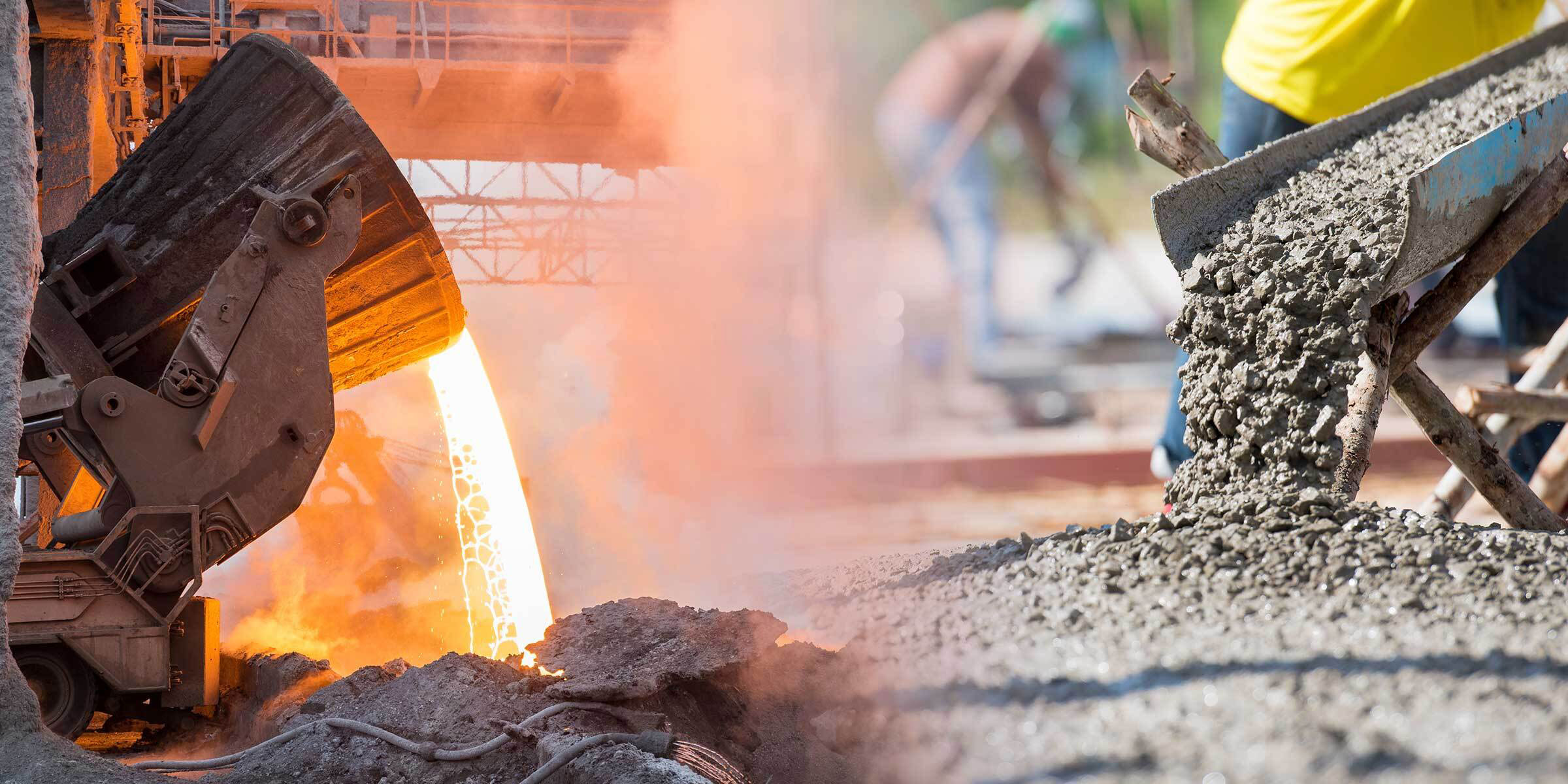NYSP2I leads study to help steelmaker verify circular solution for slag
A feasibility study led by the New York State Pollution Prevention Institute (NYSP2I) and Clarkson University will determine if a common byproduct of steelmaking can be used as a concrete ingredient.
NYSP2I, which is managed by the Golisano Institute for Sustainability (GIS) at Rochester Institute of Technology (RIT) and funded by New York State's Environmental Protection Fund (EPF), will work with Nucor Steel Auburn Inc. (Nucor), a steel manufacturer and recycler with locations throughout North America. The team will conduct an analysis of the electric-arc furnace (EAF) slag generated at Nucor’s facilities to determine if the byproduct material can serve as a coarse aggregate, a basic component of concrete mix that is conventionally made with quarried limestone.
EAF slag is a hard, stony material that is produced as a byproduct of steel recycling. It is used throughout the world to replace quarried natural rocks and minerals as a base for roads, driveways, and parking lots. Its use as a replacement for coarse aggregate is less common—and less understood.
Yet a growing body of research suggests that diverting EAF slag into concrete production could help to lower the environmental impact of the built environment, a sector that accounts for 38 percent of all energy-related carbon emissions when construction activities are considered. Concrete is second only to water when it comes to the world’s most-consumed resources. But, unlike water, concrete relies on a highly complex industrial process that contributes about eight percent of global carbon-dioxide emissions.
The pressure to find more sustainable approaches to producing steel—one of the most widely used materials in buildings alongside concrete—is growing. The consulting firm McKinsey and Company warned that 14 percent of a steel company’s potential value is at risk if it cannot find ways to lower its impacts.
“Companies that want to find circular economy solutions for industrial products like EAF slag need to answer a lot of questions before they can confidently move forward,” said Kim Bawden, a senior pollution prevention engineer at NYSP2I. “Feasibility studies help them do that by giving them objective data that are based on industry standards.”
Bawden is overseeing the study. Sulapha Peethamparan and Robert J. Thomas, a professor and an assistant professor in civil and environmental engineering at Clarkson University respectively, are the project’s lead researchers.
The NYSP2I-Clarkson team will provide Nucor with an independent, third-party assessment of its EAF slag using criteria set by relevant ASTM International standards. The evaluation will assess the physical properties of both EAF slag and limestone, then compare how each performs as a coarse aggregate in concrete. A focus of the tests will be to determine how EAF slag affects the workability and comprehensive strength of concrete when used as a limestone replacement.
Of note, the researchers will investigate the effect of EAF slag on the expansion of concrete after it is set. This is a concern that has been raised by some industry consumers in the United States, where there is greater skepticism about its use in concrete than elsewhere. The analysis is designed to provide Nucor a better understanding of expansion in light of the overall safety and utility of EAF-slag concrete.
Once the analysis is complete, NYSP2I and Clarkson will estimate a maximum percentage that EAF slag can confidently be used to replace traditional coarse aggregate, if at all. The study is planned to be complete by the end of summer 2023.






